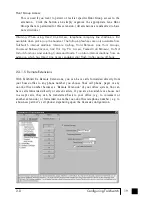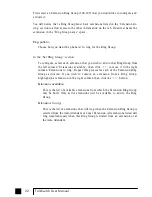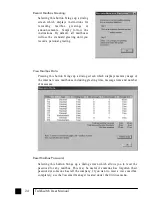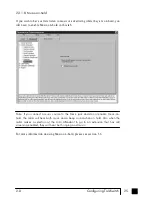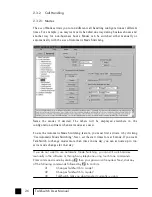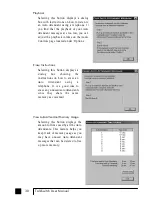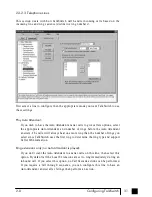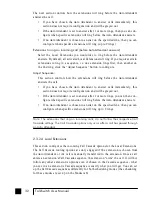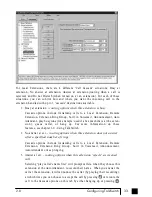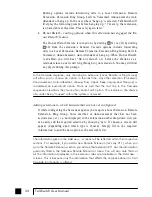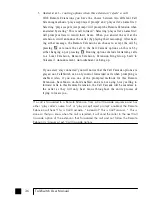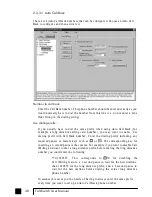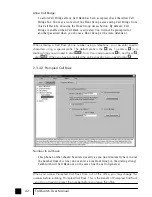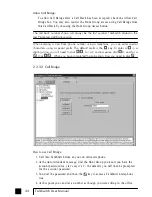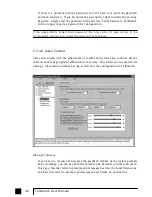
For Local Extensions, there are 4 different ' Call Cascade' situations; Busy at
extension, No answer at extension, Answer at extension(routing when a call is
rejected) and Do not Disturb (when turned on at an extension). For each of these
situations, you can control how and where you want the incoming call to the
extension handled with up to 3 'cascade' destinations available.
1. Busy at extension -
routing options when this extension is busy
Cascade options include forwarding calls to a Local Extension, Remote
Extension, Extension Ring Group, built in Voicemail, Announcement, Auto
Attendant, play busy tone (for example: used if a fax machine is at the exten -
s i o n ) , q u e u e c a l l e r , o r h a n g u p . F o r m o r e i n f o r m a t i o n o n t h e s e
features, see chapter 3.0 - Using TalkSwitch.
2. No answer at ext. -
routing options when this extension does not answer
after a specified number of rings.
Cascade options include forwarding calls to a Local Extension, Remote
Extension, Extension Ring Group, built in Voicemail, Announcement,
Auto Attendant or keep ringing.
3. Answer at ext. -
routing options when this extension 'rejects' a screened
call.
Selecting 'play caller’s name first' will prompt callers, when they choose this
extension at the Auto Attendant, to record their name. When you answer the
call at the extension, it will announce the caller (by playing their recording),
at which time you can choose to accept the call by pressing or reroute the
call to the Cascade options on this tab by either hanging up or pressing .
33
2.0
Configuring TalkSwitch
TS-user manual_Final_3rd.qxd 8/9/01 2:14 PM Page 33

